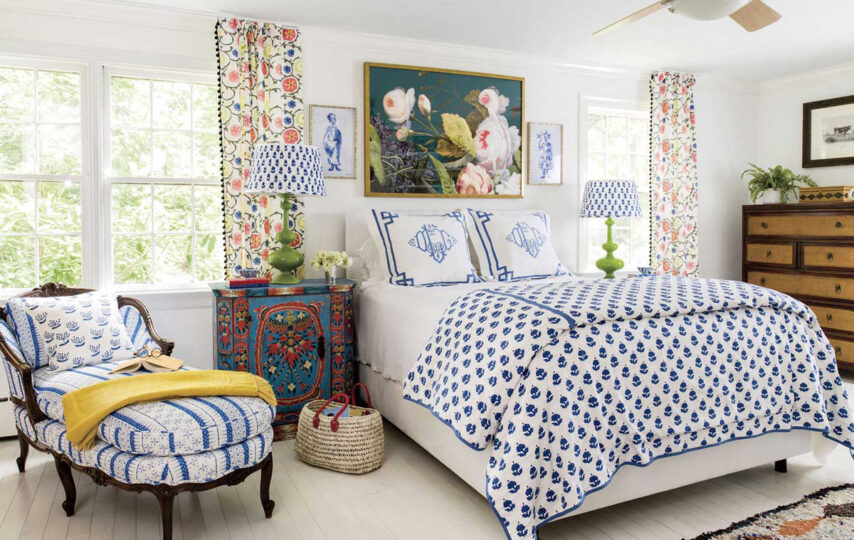Creating a visually appealing bedroom involves more than just selecting the right color palette and furniture. Incorporating a mix of textures and patterns can add depth, warmth, and character to your space, making it feel both inviting and stylish. However, achieving a balanced look requires a thoughtful approach to ensure harmony rather than chaos. By following a few key principles, homeowners can successfully blend textures and patterns to create a cohesive and beautiful bedroom design.
Layering Different Textures
Texture plays a crucial role in bedroom design by adding dimension and tactile interest. A well-balanced space incorporates a variety of textures that contrast and complement each other. Soft textiles such as plush rugs, velvet cushions, and linen bedding can create a cozy atmosphere, while harder materials like wood, metal, and glass introduce structure and stability.
To achieve a sophisticated look, consider layering multiple textures within the same color scheme. For example, pairing a chunky knit throw with smooth cotton sheets and a sleek leather headboard adds contrast while maintaining a cohesive feel. Mixing matte and glossy finishes—such as a wooden nightstand with a ceramic lamp—can further enhance the overall aesthetic without overwhelming the space.
Mixing Patterns with Purpose
Patterns bring energy and personality to a bedroom, but using them correctly is key to maintaining balance. Start by selecting a dominant pattern that will serve as the focal point, such as a bold floral duvet or a geometric area rug. Then, incorporate smaller-scale patterns that complement rather than compete with the primary design.
Stripes, florals, plaids, and abstract motifs can all coexist harmoniously when united by a common color palette. If you’re unsure how to mix patterns effectively, use the 60-30-10 rule: 60% of the space should feature a dominant pattern, 30% a secondary, less prominent pattern, and 10% an accent pattern to add a final touch of detail.
Coordinating Colors for Cohesion
A well-balanced bedroom relies on a cohesive color scheme to tie textures and patterns together. Neutral tones such as whites, beiges, and grays can act as a versatile foundation, allowing you to experiment with bold textures and patterns without creating visual clutter. If you prefer more vibrant hues, choose one or two main colors and use them consistently throughout different elements in the room.
To maintain harmony, consider repeating colors in different textures. For instance, if you have a navy blue upholstered bench, incorporate navy blue patterned pillows or a textured navy throw blanket. This repetition creates unity and prevents the design from feeling disjointed.
Finding the Right Balance Between Soft and Hard Elements
Balance is key when mixing textures and patterns, and one way to achieve this is by blending soft and hard elements. A room with too many soft fabrics may feel overly plush, while an excess of hard surfaces can feel stark and uninviting. Combining the two in strategic ways creates a well-rounded and comfortable environment.
For instance, if your bedroom features a metal bed frame, soften the look with plush bedding, a woven area rug, and velvet or silk drapes. Similarly, if your space is dominated by soft furnishings, introduce contrast through wooden furniture, a statement mirror, or metallic accents to prevent the design from feeling too monotone.
Selecting the Right Furniture Size for Balance
Choosing the right furniture is another aspect of achieving a balanced bedroom design. One consideration homeowners often face is selecting between a king and a California king bed. While both options offer ample sleeping space, a king bed is wider, making it a great choice for those who want extra room to spread out. A California king, on the other hand, is longer and better suited for taller individuals or narrower rooms.
The bed size you choose will influence the overall proportions of the room. If you opt for a larger bed, balance it with appropriately sized nightstands, dressers, and decor elements to ensure a well-proportioned layout that doesn’t feel overcrowded.
Incorporating Natural Elements
Bringing natural elements into the bedroom helps to balance textures and patterns by introducing organic contrast. Materials like wood, rattan, stone, and plants add warmth and an earthy touch to the space. A wooden bed frame paired with a textured jute rug and soft linen curtains creates a harmonious blend of nature-inspired elements.
Indoor plants not only improve air quality but also add an extra layer of texture. Their lush greenery contrasts beautifully with structured furniture pieces and patterned textiles, helping to create a tranquil and balanced environment.
Personalizing the Space with Thoughtful Accents
While following design principles is important, personal touches are what truly make a bedroom feel like home. Displaying a mix of framed artwork, decorative pillows, and unique accessories allows you to infuse personality into the space without overwhelming the design.
A well-placed statement piece, such as a handwoven tapestry or a sculptural lamp, can serve as a focal point while tying together various textures and patterns. Just be mindful of scale—too many bold accents can make a room feel cluttered, while a well-curated selection will enhance its overall aesthetic.
Conclusion
Mixing textures and patterns is an art that, when done correctly, can elevate the design of any bedroom. By layering different textures, thoughtfully combining patterns, and maintaining a cohesive color scheme, homeowners can create a space that feels balanced, inviting, and stylish. Paying attention to furniture proportions, natural elements, and personal accents ensures that the design remains harmonious while reflecting individual taste.
Whether incorporating a variety of fabrics, selecting the right-sized bed, or blending soft and hard elements, the key is to experiment with confidence while keeping balance in mind. With these principles, you can transform your bedroom into a beautifully designed retreat that is both comfortable and visually appealing.


